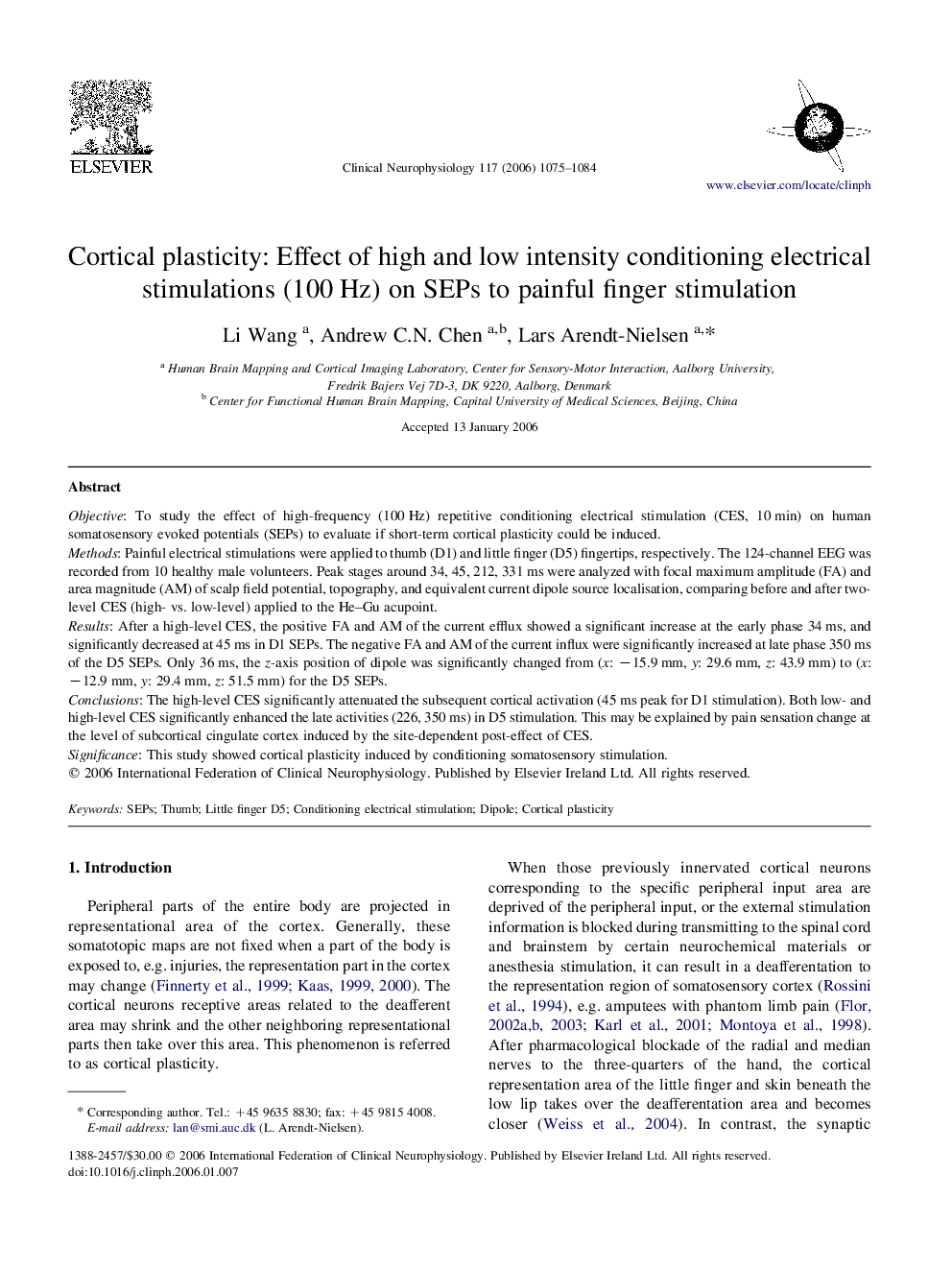| Article ID | Journal | Published Year | Pages | File Type |
|---|---|---|---|---|
| 3048639 | Clinical Neurophysiology | 2006 | 10 Pages |
ObjectiveTo study the effect of high-frequency (100 Hz) repetitive conditioning electrical stimulation (CES, 10 min) on human somatosensory evoked potentials (SEPs) to evaluate if short-term cortical plasticity could be induced.MethodsPainful electrical stimulations were applied to thumb (D1) and little finger (D5) fingertips, respectively. The 124-channel EEG was recorded from 10 healthy male volunteers. Peak stages around 34, 45, 212, 331 ms were analyzed with focal maximum amplitude (FA) and area magnitude (AM) of scalp field potential, topography, and equivalent current dipole source localisation, comparing before and after two-level CES (high- vs. low-level) applied to the He–Gu acupoint.ResultsAfter a high-level CES, the positive FA and AM of the current efflux showed a significant increase at the early phase 34 ms, and significantly decreased at 45 ms in D1 SEPs. The negative FA and AM of the current influx were significantly increased at late phase 350 ms of the D5 SEPs. Only 36 ms, the z-axis position of dipole was significantly changed from (x: −15.9 mm, y: 29.6 mm, z: 43.9 mm) to (x: −12.9 mm, y: 29.4 mm, z: 51.5 mm) for the D5 SEPs.ConclusionsThe high-level CES significantly attenuated the subsequent cortical activation (45 ms peak for D1 stimulation). Both low- and high-level CES significantly enhanced the late activities (226, 350 ms) in D5 stimulation. This may be explained by pain sensation change at the level of subcortical cingulate cortex induced by the site-dependent post-effect of CES.SignificanceThis study showed cortical plasticity induced by conditioning somatosensory stimulation.
